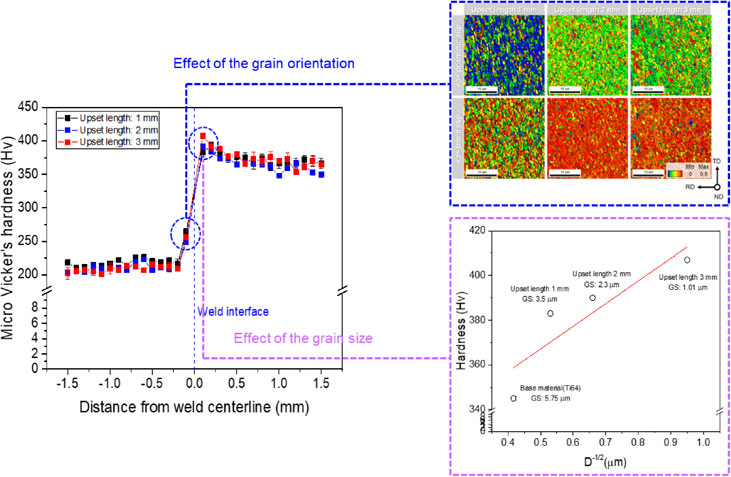Volume 64, Issue 6
Displaying 1-26 of 26 articles from this issue
- |<
- <
- 1
- >
- >|
Review
-
Article type: Review
2023Volume 64Issue 6 Pages 1083-1097
Published: June 01, 2023
Released on J-STAGE: May 25, 2023
Download PDF (10905K) Full view HTML
Special Issue on Creation of Materials by Superthermal Field
-
Article type: Preface
Subject area: Special Issue on Creation of Materials by Superthermal Field
2023Volume 64Issue 6 Pages 1098
Published: June 01, 2023
Released on J-STAGE: May 25, 2023
Download PDF (31K) Full view HTML -
Article type: Regular Article
Subject area: Special Issue on Creation of Materials by Superthermal Field
2023Volume 64Issue 6 Pages 1099-1106
Published: June 01, 2023
Released on J-STAGE: May 25, 2023
Download PDF (4965K) Full view HTML -
Article type: Regular Article
Subject area: Special Issue on Creation of Materials by Superthermal Field
2023Volume 64Issue 6 Pages 1107-1111
Published: June 01, 2023
Released on J-STAGE: May 25, 2023
Advance online publication: February 10, 2023Download PDF (2475K) Full view HTML -
Article type: Regular Article
Subject area: Special Issue on Creation of Materials by Superthermal Field
2023Volume 64Issue 6 Pages 1112-1118
Published: June 01, 2023
Released on J-STAGE: May 25, 2023
Download PDF (3517K) Full view HTML -
Article type: Regular Article
Subject area: Special Issue on Creation of Materials by Superthermal Field
2023Volume 64Issue 6 Pages 1119-1124
Published: June 01, 2023
Released on J-STAGE: May 25, 2023
Download PDF (4261K) Full view HTML -
Article type: Regular Article
Subject area: Special Issue on Creation of Materials by Superthermal Field
2023Volume 64Issue 6 Pages 1125-1134
Published: June 01, 2023
Released on J-STAGE: May 25, 2023
Download PDF (7452K) Full view HTML -
 Article type: Regular Article
Article type: Regular Article
Subject area: Special Issue on Creation of Materials by Superthermal Field
2023Volume 64Issue 6 Pages 1135-1142
Published: June 01, 2023
Released on J-STAGE: May 25, 2023
Advance online publication: March 17, 2023 -
 Article type: Regular Article
Article type: Regular Article
Subject area: Special Issue on Creation of Materials by Superthermal Field
2023Volume 64Issue 6 Pages 1143-1149
Published: June 01, 2023
Released on J-STAGE: May 25, 2023
Advance online publication: April 07, 2023 -
Article type: Regular Article
Subject area: Special Issue on Creation of Materials by Superthermal Field
2023Volume 64Issue 6 Pages 1150-1159
Published: June 01, 2023
Released on J-STAGE: May 25, 2023
Advance online publication: March 03, 2023Download PDF (5932K) Full view HTML -
Article type: Regular Article
Subject area: Special Issue on Creation of Materials by Superthermal Field
2023Volume 64Issue 6 Pages 1160-1168
Published: June 01, 2023
Released on J-STAGE: May 25, 2023
Download PDF (4169K) Full view HTML -
Article type: Regular Article
Subject area: Special Issue on Creation of Materials by Superthermal Field
2023Volume 64Issue 6 Pages 1169-1174
Published: June 01, 2023
Released on J-STAGE: May 25, 2023
Download PDF (4355K) Full view HTML -
Article type: Regular Article
Subject area: Special Issue on Creation of Materials by Superthermal Field
2023Volume 64Issue 6 Pages 1175-1182
Published: June 01, 2023
Released on J-STAGE: May 25, 2023
Advance online publication: March 17, 2023Download PDF (4697K) Full view HTML -
Article type: Regular Article
Subject area: Special Issue on Creation of Materials by Superthermal Field
2023Volume 64Issue 6 Pages 1183-1187
Published: June 01, 2023
Released on J-STAGE: May 25, 2023
Download PDF (2609K) Full view HTML -
Article type: Regular Article
Subject area: Special Issue on Creation of Materials by Superthermal Field
2023Volume 64Issue 6 Pages 1188-1193
Published: June 01, 2023
Released on J-STAGE: May 25, 2023
Download PDF (3886K) Full view HTML
Regular Article
Materials Physics
-
Article type: Regular Article
2023Volume 64Issue 6 Pages 1194-1198
Published: June 01, 2023
Released on J-STAGE: May 25, 2023
Download PDF (1659K) Full view HTML
Microstructure of Materials
-
Article type: Regular Article
2023Volume 64Issue 6 Pages 1199-1204
Published: June 01, 2023
Released on J-STAGE: May 25, 2023
Download PDF (5244K) Full view HTML -
Preparation and Thermal Conductivity of Copper Plated Carbon Fiber Dispersed Steel Matrix CompositesArticle type: Regular Article
2023Volume 64Issue 6 Pages 1205-1209
Published: June 01, 2023
Released on J-STAGE: May 25, 2023
Advance online publication: March 31, 2023Download PDF (1857K) Full view HTML
Mechanics of Materials
-
Article type: Regular Article
2023Volume 64Issue 6 Pages 1210-1216
Published: June 01, 2023
Released on J-STAGE: May 25, 2023
Download PDF (6582K) Full view HTML -
Article type: Regular Article
2023Volume 64Issue 6 Pages 1217-1224
Published: June 01, 2023
Released on J-STAGE: May 25, 2023
Advance online publication: April 07, 2023Download PDF (3304K) Full view HTML -
Article type: Regular Article
2023Volume 64Issue 6 Pages 1225-1231
Published: June 01, 2023
Released on J-STAGE: May 25, 2023
Download PDF (3632K) Full view HTML
Materials Chemistry
-
Article type: Regular Article
2023Volume 64Issue 6 Pages 1232-1240
Published: June 01, 2023
Released on J-STAGE: May 25, 2023
Download PDF (6440K) Full view HTML -
Article type: Regular Article
2023Volume 64Issue 6 Pages 1241-1249
Published: June 01, 2023
Released on J-STAGE: May 25, 2023
Advance online publication: March 31, 2023Download PDF (5836K) Full view HTML -
Article type: Regular Article
2023Volume 64Issue 6 Pages 1250-1256
Published: June 01, 2023
Released on J-STAGE: May 25, 2023
Advance online publication: March 31, 2023Download PDF (6777K) Full view HTML
Materials Processing
-
Article type: Regular Article
2023Volume 64Issue 6 Pages 1257-1264
Published: June 01, 2023
Released on J-STAGE: May 25, 2023
Download PDF (11046K) Full view HTML
Engineering Materials and Their Applications
-
Article type: Regular Article
2023Volume 64Issue 6 Pages 1265-1270
Published: June 01, 2023
Released on J-STAGE: May 25, 2023
Advance online publication: April 14, 2023Download PDF (2816K) Full view HTML
- |<
- <
- 1
- >
- >|
























